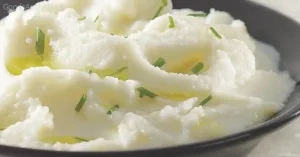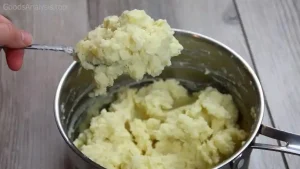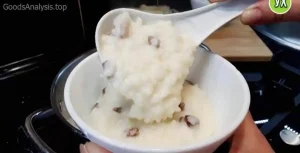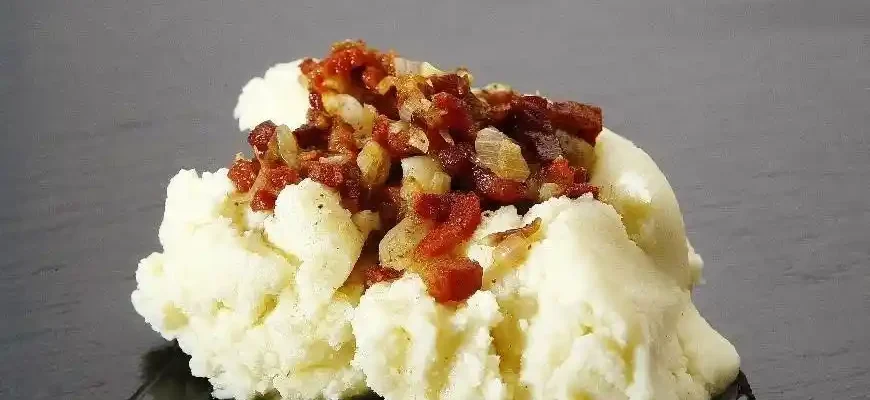Mashed cauliflower has become a popular alternative to mashed potatoes for those looking to reduce carbs, follow a gluten-free diet, or simply add more vegetables to their meals. As someone who’s been in the kitchen for decades, I can tell you that this dish is not only healthier but surprisingly versatile. It’s a great side dish for almost any meal, and with a few simple tweaks, you can make it just as comforting and satisfying as the classic mashed potatoes.
What is Mashed Cauliflower?
Mashed cauliflower is exactly what it sounds like: cauliflower that’s been cooked and mashed to resemble mashed potatoes. While cauliflower may not have the starchy richness of potatoes, it can take on a creamy texture when properly cooked and blended, making it a fantastic low-carb and lower-calorie alternative.
Cauliflower is packed with nutrients, including fiber, vitamin C, vitamin K, and a variety of antioxidants. It’s also low in calories, which makes it a perfect choice for those trying to watch their weight or manage blood sugar levels. But let’s not get too caught up in the science just yet—we’ll get to that later. First, let’s talk about how to make it.
How to Make Mashed Cauliflower
Ingredients:
- 1 large head of cauliflower (about 4-5 cups of florets)
- 2-3 cloves of garlic (optional, for flavor)
- 2-3 tbsp butter (for a rich, creamy texture; you can use olive oil for a lighter version)
- ½ cup heavy cream or milk (or a dairy-free alternative, like almond milk)
- Salt and pepper, to taste
- Optional: fresh herbs (like chives or parsley) for garnish
- Optional: grated cheese (Parmesan or cheddar) for extra flavor

Instructions:
- Prep the Cauliflower:
Start by washing and cutting the cauliflower into florets. You’ll want to get rid of the tough stem, as it doesn’t mash well. Aim for smaller florets so they cook evenly and quickly. - Boil the Cauliflower:
In a large pot, bring water to a boil. Add the cauliflower florets and garlic (if using) and cook for about 8-10 minutes, or until the cauliflower is tender when pierced with a fork. If you’re in a rush, you can also steam the cauliflower for 7-8 minutes. - Drain and Dry:
Once the cauliflower is cooked, drain it well and then use a paper towel or clean kitchen towel to pat it dry. This step is crucial because excess water will result in a watery mash, which is exactly what we don’t want. A dry cauliflower will ensure a creamy texture. - Mash It:
Now comes the fun part. You can mash the cauliflower using a potato masher, an immersion blender, or a food processor. If you like it smooth, the food processor or immersion blender is your best bet. Just be careful not to over-process, as it can turn into a puree. - Add the Creaminess:
Add butter, heavy cream (or milk), salt, and pepper to taste. You can also throw in some grated cheese if you like a cheesy version. Mix until it’s nice and smooth. If you find it too thick, just add a bit more cream or milk to achieve the texture you prefer. - Serve:
Transfer the mashed cauliflower to a serving dish, garnish with fresh herbs, and enjoy! You can also sprinkle a little extra cheese on top for some added flavor.

Nutritional Benefits of Mashed Cauliflower
Here’s where the real benefits of mashed cauliflower shine. While a serving of traditional mashed potatoes can pack over 200 calories and a good amount of carbohydrates, mashed cauliflower has far fewer calories and significantly fewer carbs. A typical serving of mashed cauliflower contains around 40-50 calories and just 5-7 grams of carbs, depending on how you prepare it.
Cauliflower is also a powerhouse of vitamins and minerals, including:
- Vitamin C: Important for immune function and skin health.
- Fiber: Supports digestion and helps keep you feeling full longer.
- Antioxidants: Cauliflower contains various phytonutrients, including glucosinolates and isothiocyanates, which are linked to anti-inflammatory and cancer-protective benefits.
For those with dietary restrictions, mashed cauliflower is naturally gluten-free, dairy-free (if you leave out the butter and cream), and suitable for vegan diets.

Variations on the Classic Recipe
You can customize your mashed cauliflower to suit your tastes or dietary needs. Here are a few ideas:
- Garlic Mashed Cauliflower: Roast a head of garlic alongside the cauliflower for an extra punch of flavor.
- Cheesy Mashed Cauliflower: Add a generous handful of grated Parmesan or cheddar cheese for a creamy, cheesy mash.
- Herb-Infused Mashed Cauliflower: Mix in fresh herbs like rosemary, thyme, or chives for an aromatic boost.
- Vegan Version: Replace butter and cream with olive oil and coconut milk for a creamy, dairy-free version.
Potential Pitfalls and How to Solve Them
Even though mashed cauliflower is a simple dish, there are a few things that can go wrong. Here are some common issues people run into and how to avoid them:
- Too Watery: If your mashed cauliflower is too watery, it’s usually because the cauliflower wasn’t drained properly after cooking. Make sure you press out any excess moisture or pat it dry with a towel before mashing.
- Too Lumpy: To avoid a lumpy texture, make sure the cauliflower is cooked until it’s soft and tender. Using a food processor or immersion blender will help smooth things out. A potato masher works, but you’ll get a more rustic texture.
- Bland Flavor: If your mashed cauliflower tastes a bit dull, try roasting the cauliflower first to bring out its natural sweetness. Also, don’t skimp on the seasoning—salt and pepper are key!
- Not Creamy Enough: If you like your mashed cauliflower rich and creamy, be generous with the butter and cream. You can also add a bit of sour cream or cream cheese for extra richness.

People’s Opinions on Mashed Cauliflower
1. Maria, 32, Mexico:
“I was skeptical at first, but I love mashed cauliflower now! It’s lighter than potatoes and pairs so well with grilled chicken. I also make a cheesy version sometimes, which is so comforting.”
2. John, 55, USA:
“As someone who’s been trying to cut carbs, mashed cauliflower is a game-changer. It’s not quite the same as mashed potatoes, but with the right seasoning, it’s delicious. I prefer it with garlic and a touch of Parmesan.”
3. Aisha, 42, Kenya:
“I was looking for a low-carb alternative, and mashed cauliflower really surprised me. It’s so creamy and flavorful, and it works well as a side dish with my African stews. Definitely a keeper.”
4. Raj, 27, India:
“I tried mashed cauliflower for the first time last week. I added some cumin and turmeric to spice it up a bit, and it turned out amazing. A great way to sneak in more veggies!”
5. Elsa, 64, Sweden:
“Mashed cauliflower is perfect for those of us trying to watch our weight. I add a little sour cream for tang, and it feels like I’m having something indulgent without the guilt. Highly recommend it for anyone on a health kick!”
Final Thoughts
Mashed cauliflower is a fantastic, healthy alternative to mashed potatoes. It’s not just about cutting calories; it’s about making a dish that’s both nutritious and versatile. Whether you’re looking to reduce carbs, eat more veggies, or simply try something new, this dish is a win. The best part? You can adjust the recipe to fit your tastes and dietary needs. So, why not give it a try next time you’re looking for a comforting side dish? It might just become your new favorite!









